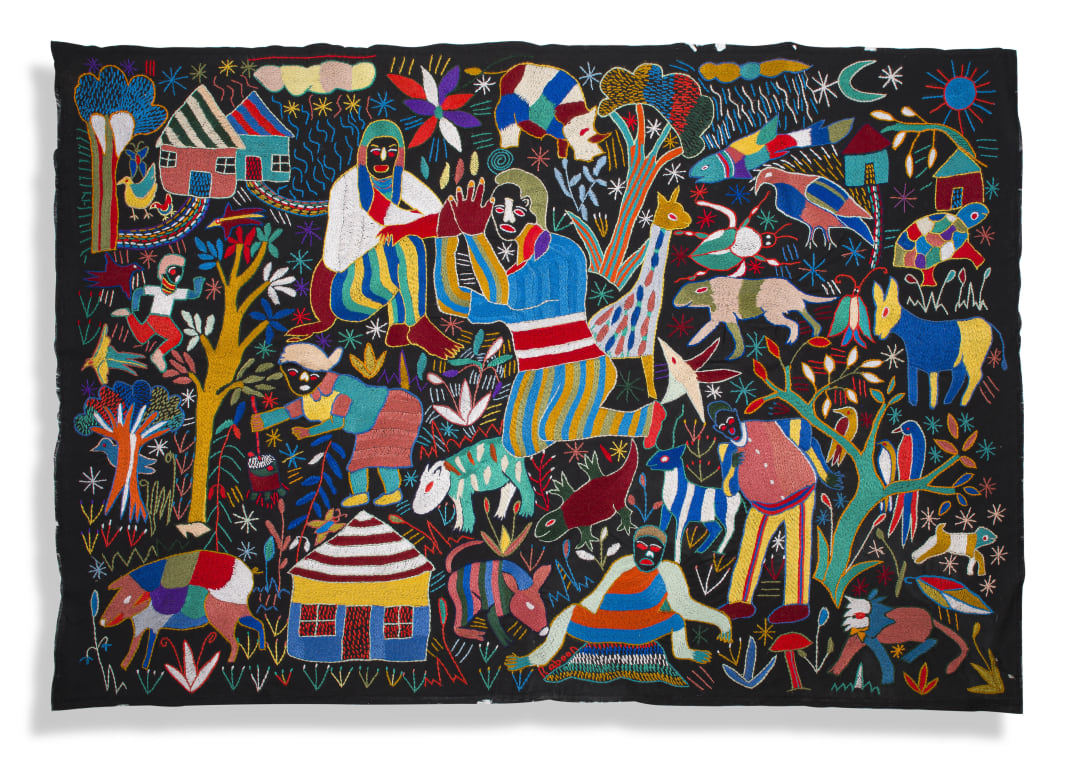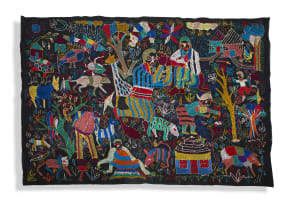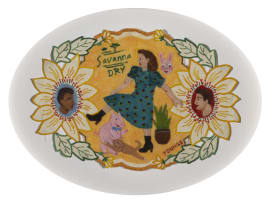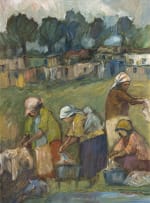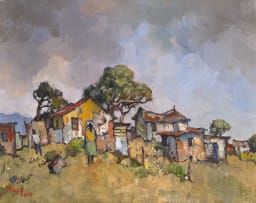Modern and Contemporary Art
Timed Online Auction, 30 June - 10 July 2023
Impression/Expression
Incl. Buyer's Premium & VAT
About this Item
Notes
Mapula Embroidery Project, established in 1991, is located in the Winterveld area, north-west of Pretoria.
'Prior to the first independent election in 1994, Winterveld was included in the so-called 'homeland' of Bophuthatswana. This highly impoverished region is home to people from an assortment of backgrounds and who speak a variety of languages. The formation of Mapula (meaning 'Mother of Rain') was part of an initiative by Soroptomists International to upgrade the living conditions of people in the Winterveld. In 1991 Karin Skawran, head of the History of Art and Fine Arts Department at the University of South Afrika (Unisa) and a Soroptomist whose portfolio was Literacy and Education, thought of introducing some type of income-generating art project in the community. She convened a meeting with fellow Soroptomist, Mimi van der Merwe, and various members of staff at Unisa, as well as Sister Joan of the Sisters of Mercy in the Winterveld. The Sisters of Mercy had started the DWT Nthathe Adult Education Centre in the 1980s, and the art project would be based at this mission. Janetje van der Merwe, a Unisa staff member who had worked with Mbhanyele Jameson Maluleke at the Chivirika collective in the Northern Province, indicated a willingness to initiate an embroidery project.
The Sisters of Mercy subsequently identified Emily Maluleke as a person in the Winterveld community who could co-ordinated the collective. Training proceeded somewhat informally rather than through any systematically structured workshop. Maluleke, an experienced needleworker, demonstrated various stitches to the approximately twenty individuals who had indicated a tentative interest in the project. Maluleke encouraged participants to draw motifs - generally printed images rather than 'from life'. Antoinette du Plessis, another Unisa staff member, showed the needleworkers how their embroideries might be made into cushion covers or components of calico shirts. The somewhat experimental works that resulted from this training were purchased by the Soroptomists and the Unisa staff, and these sales encouraged additional people to join the project.
Funding from Soroptomists and a grant from Nedcor facilitated the purchase of sewing machines, irons, ironing boards and an initial stock of material. By the end of 1991 the collective had begun to market works in the Magnolia Craft Market in Magnolia Dell, Pretoria, as well as via an NGO outlet, Rural Craft, in Rosebank, Johannesburg.'
Brenda Schmahmann (ed) (2000) Material Matters: Appliqués by the Weya Women of Zimbabwe and Needlework by South African Collectives, Johannesburg: Wits University Press, page 123.
View all Mapula Embroidery Project lots for sale in this auction
